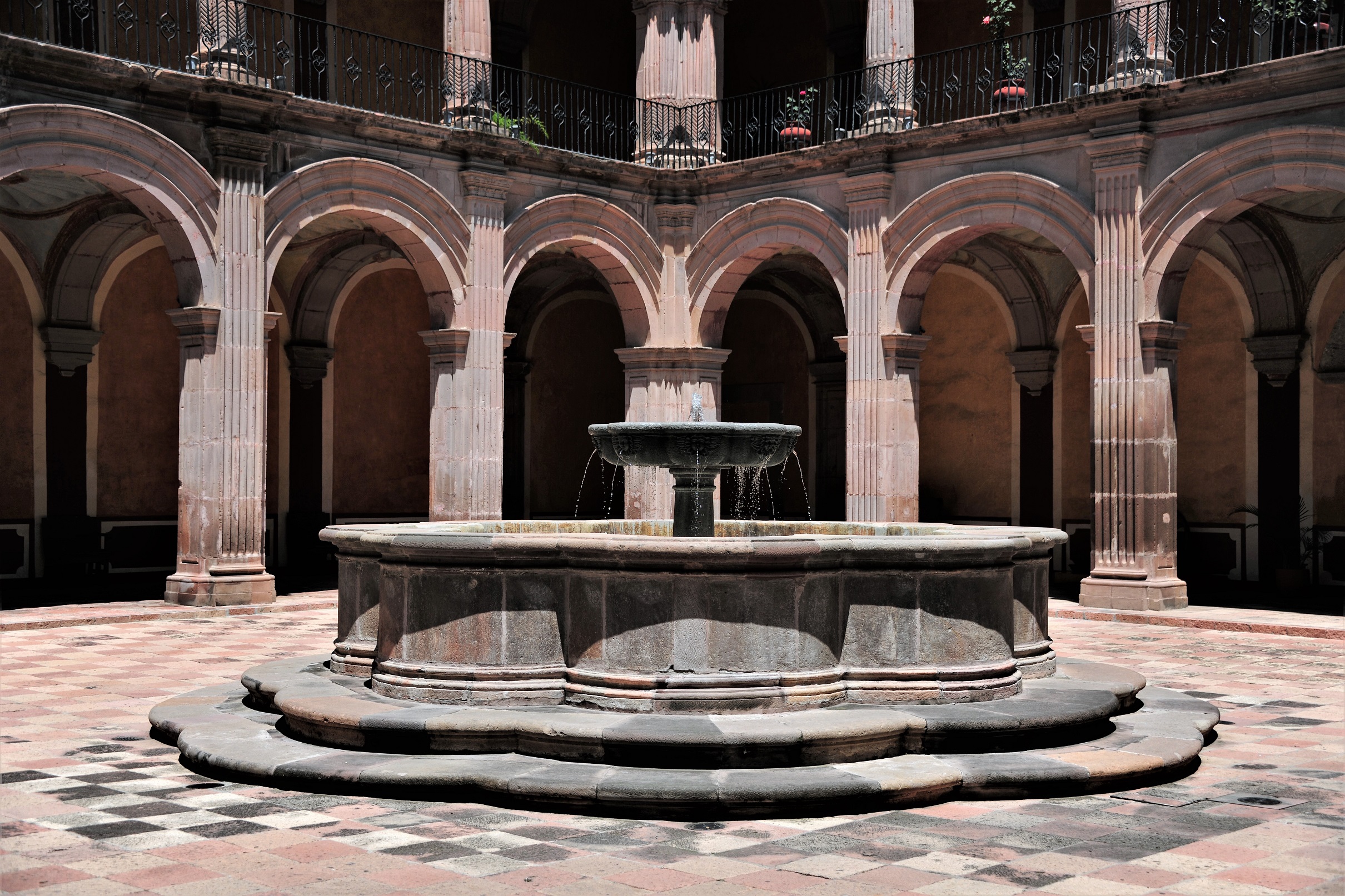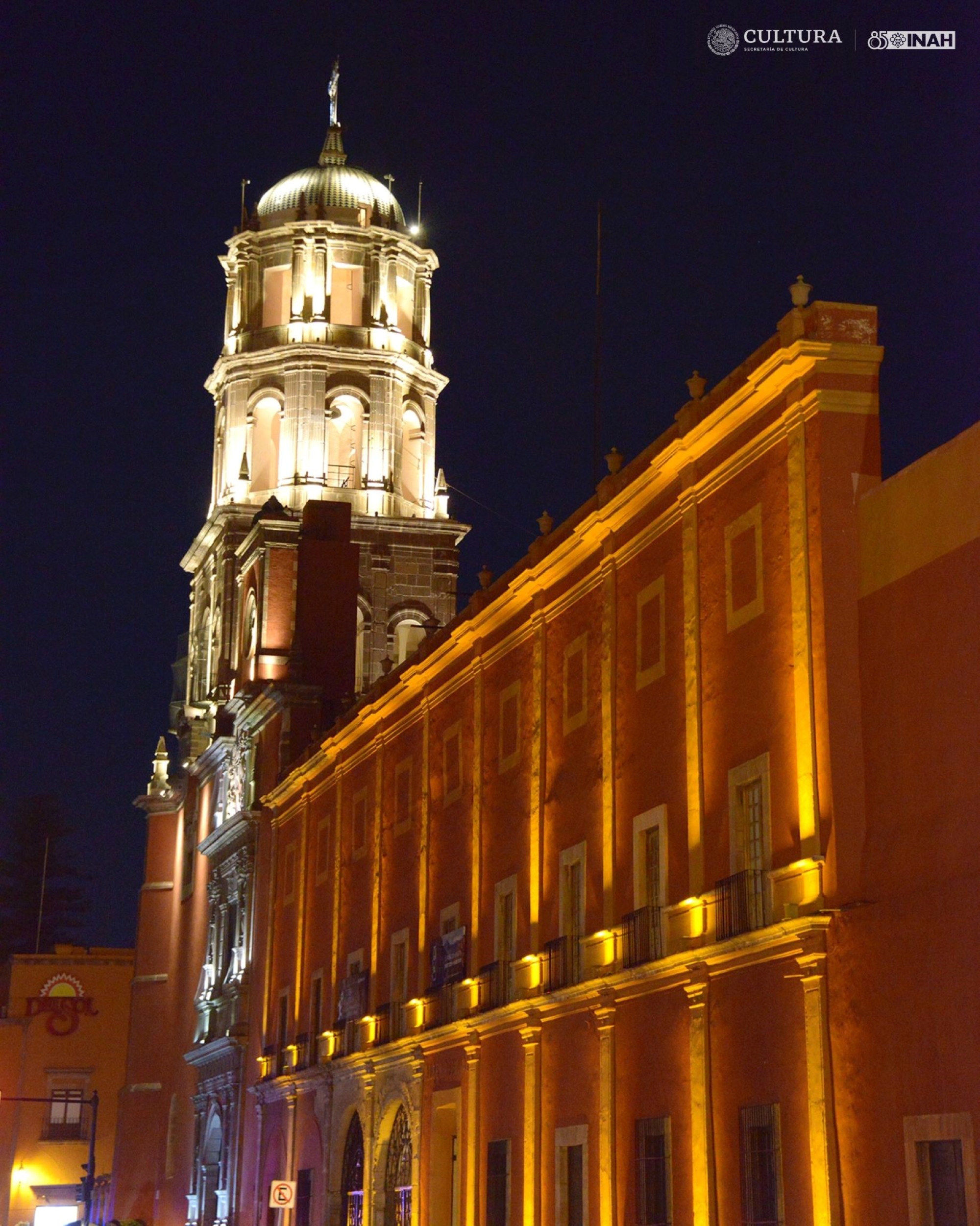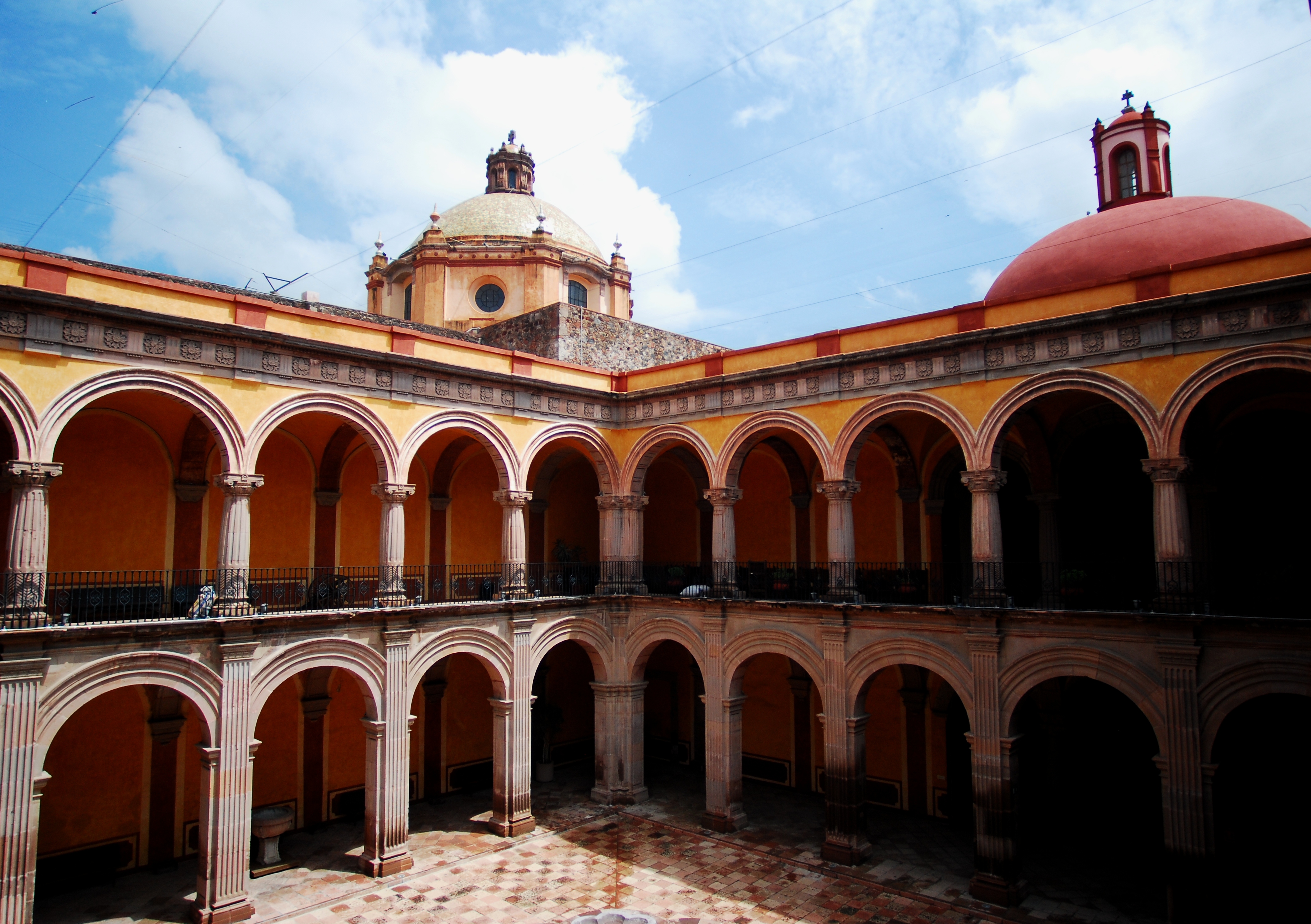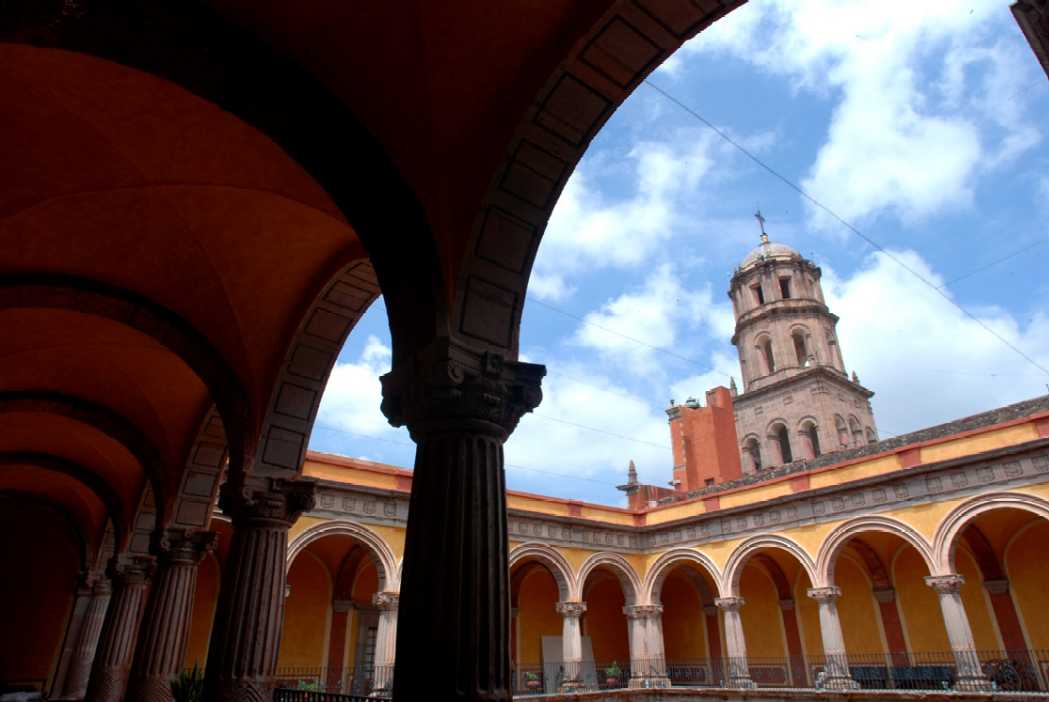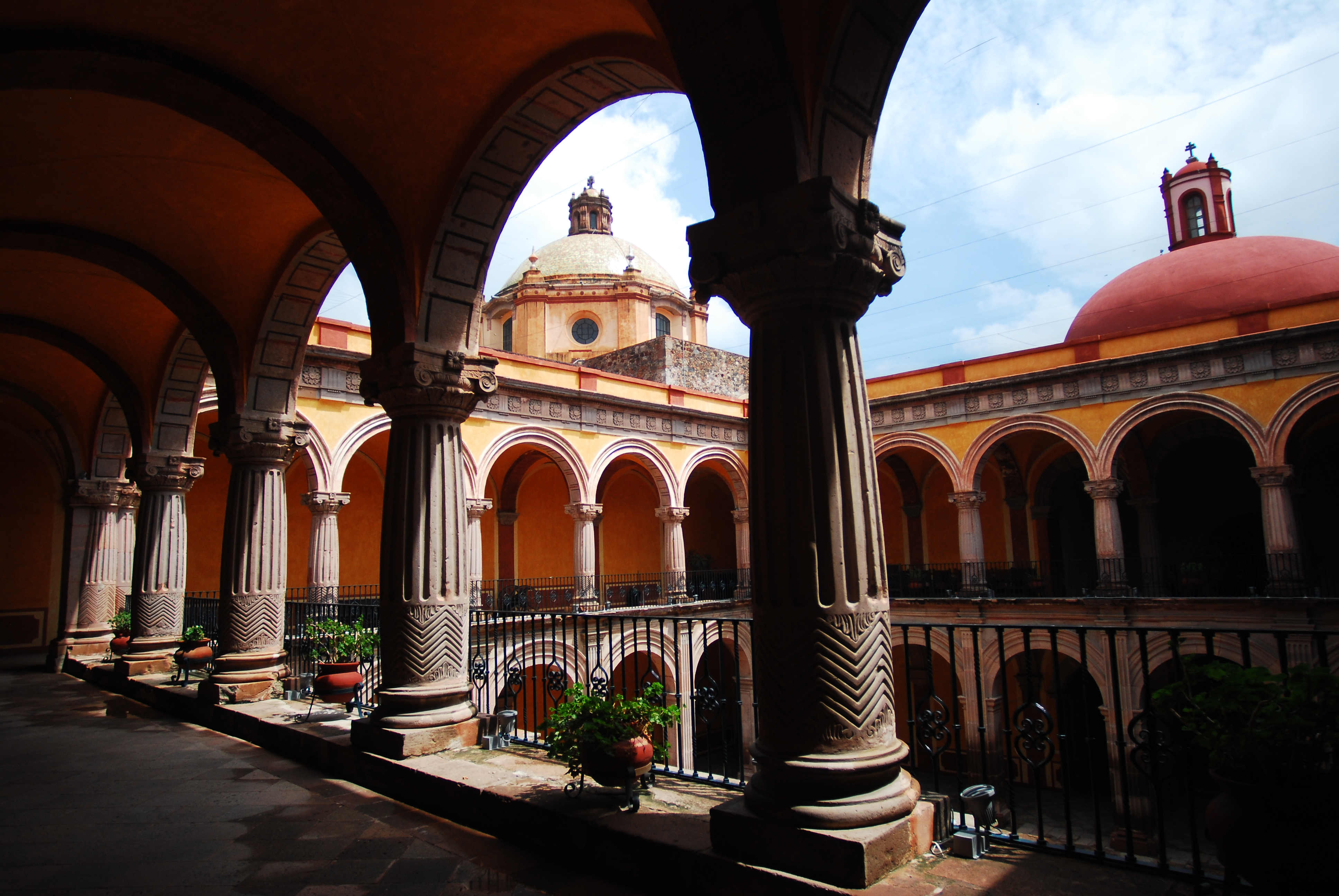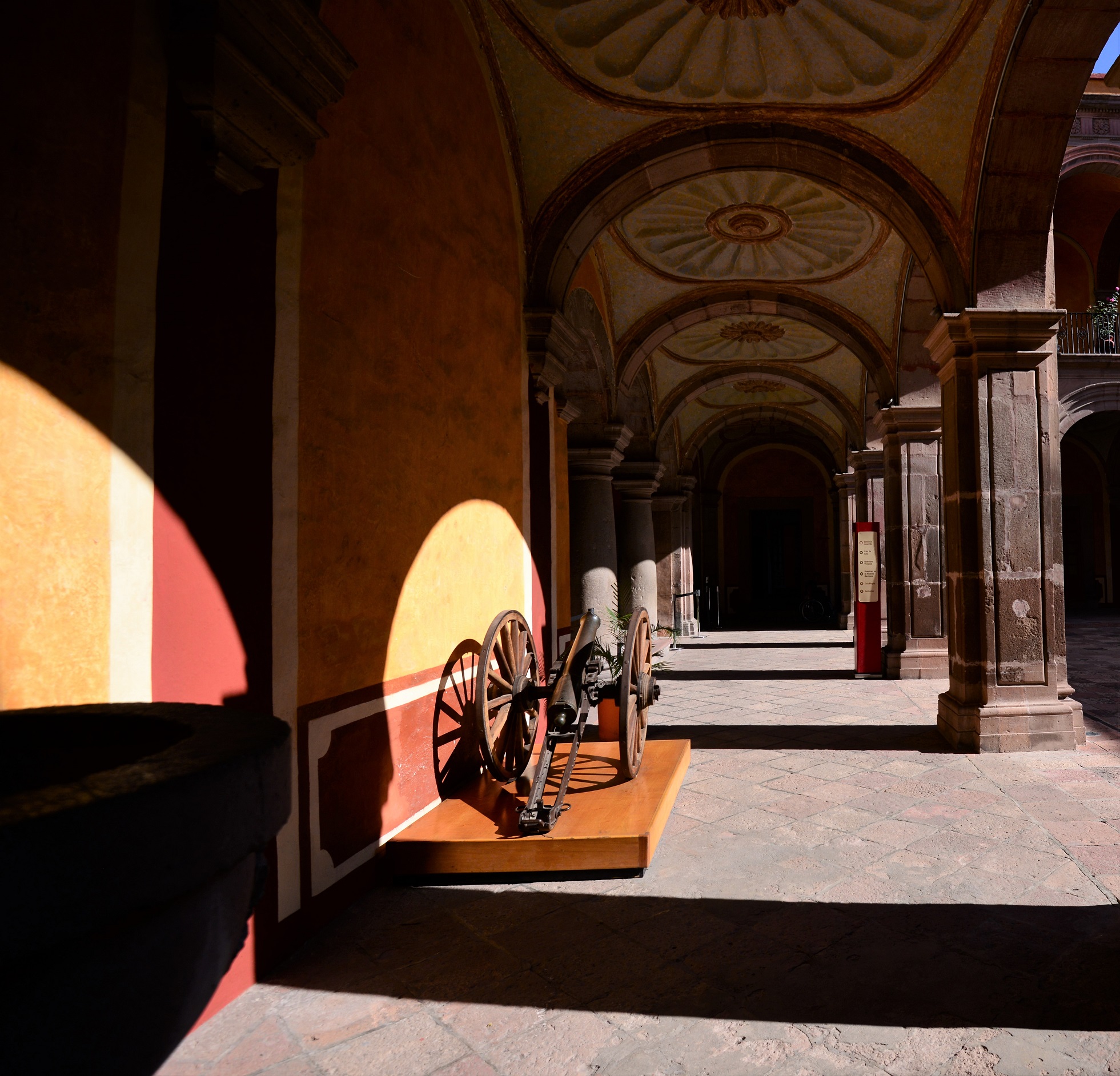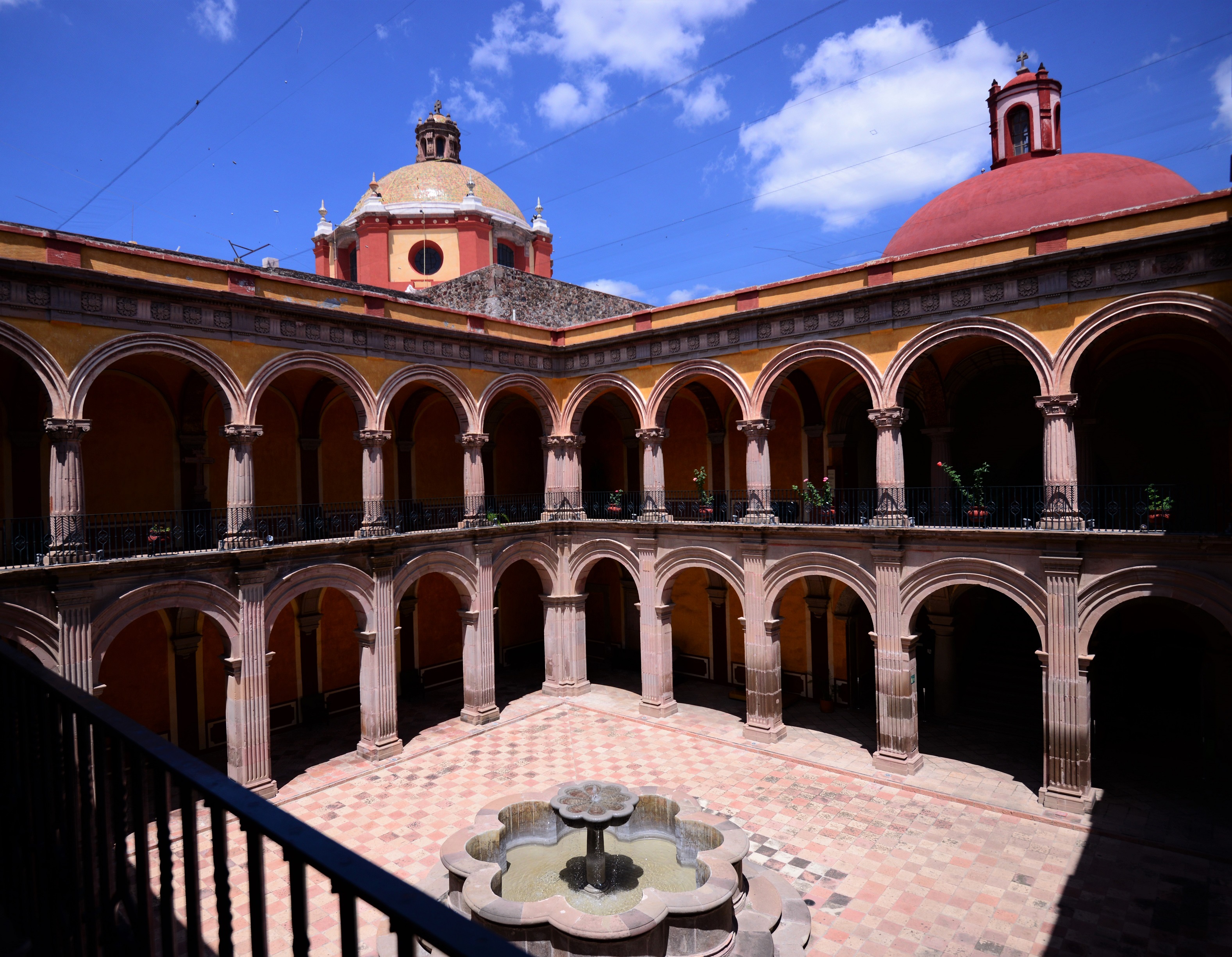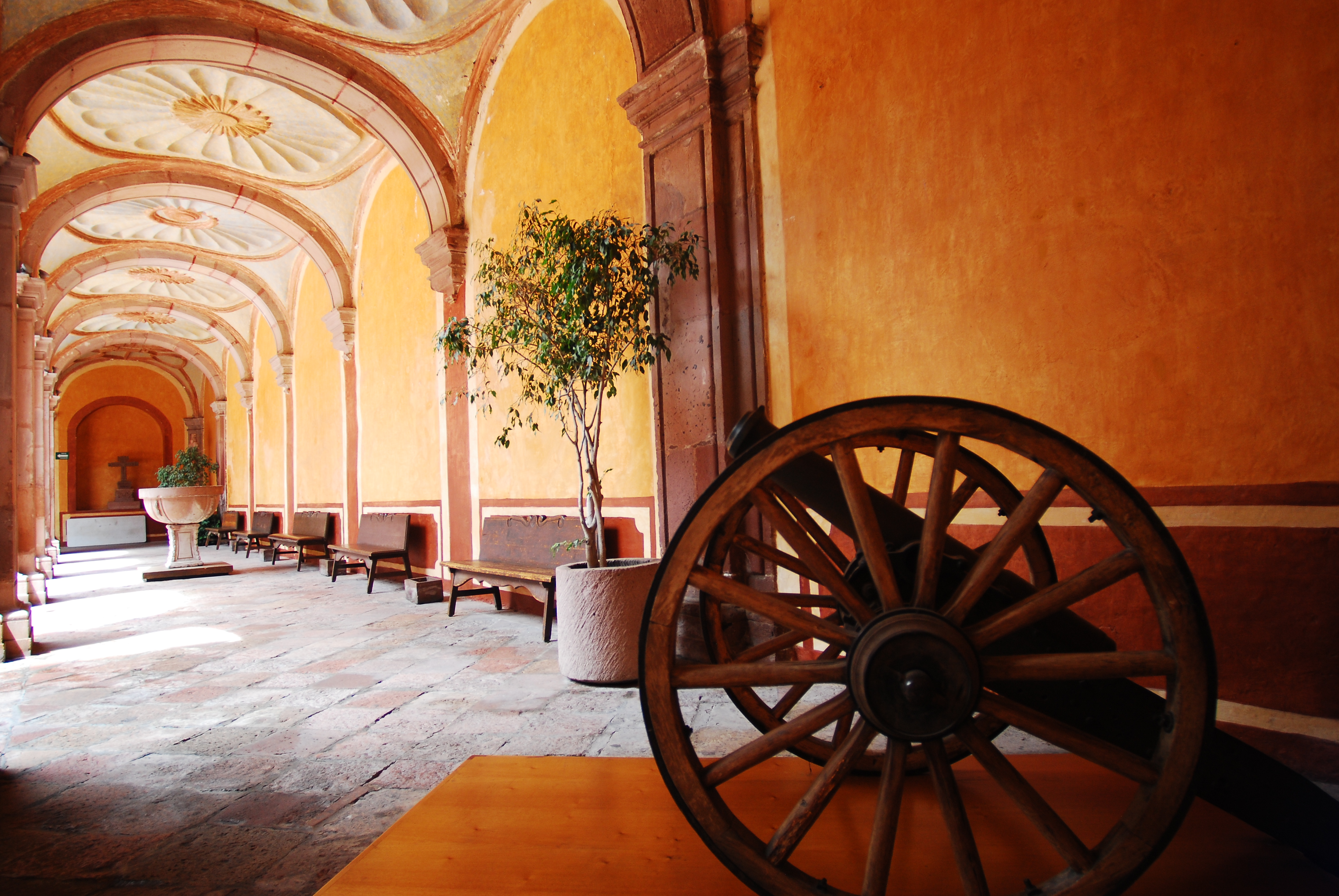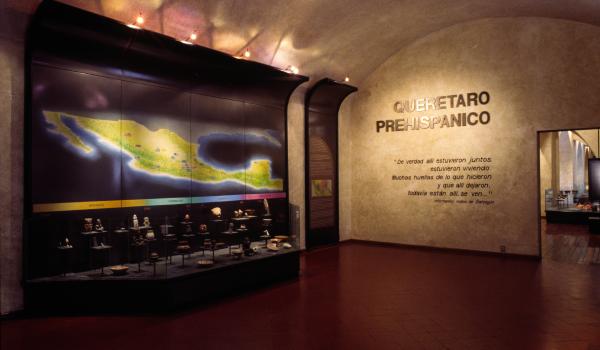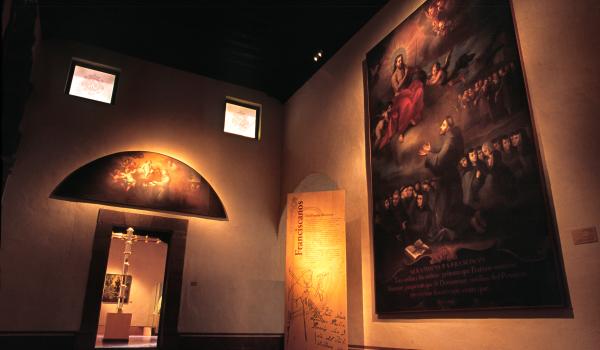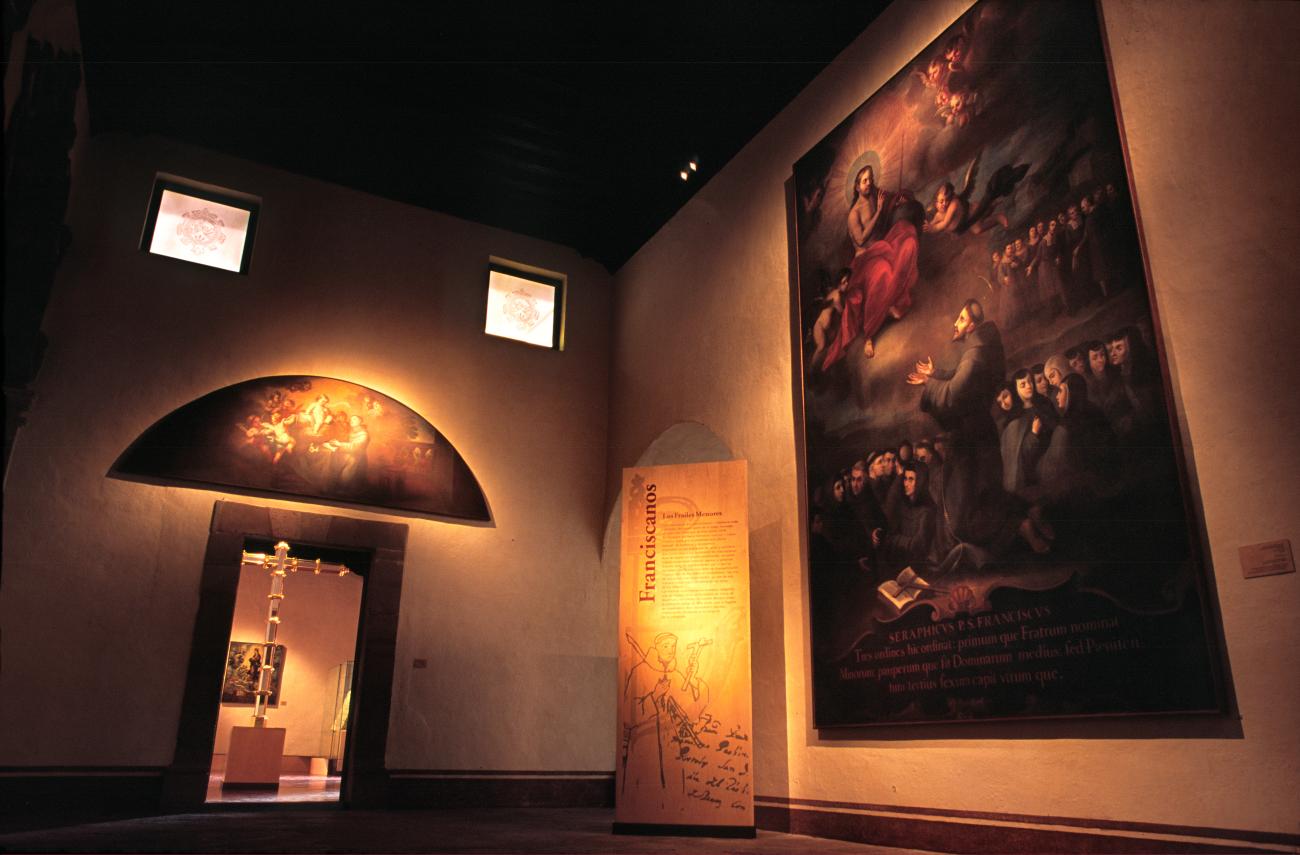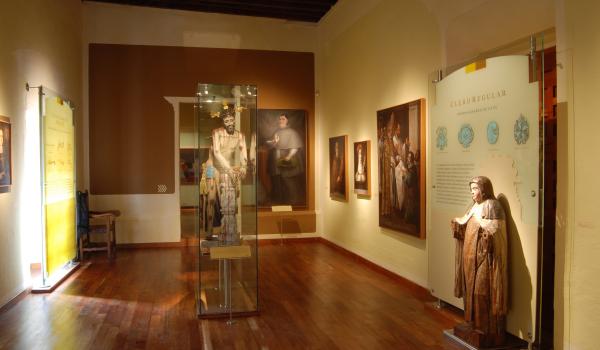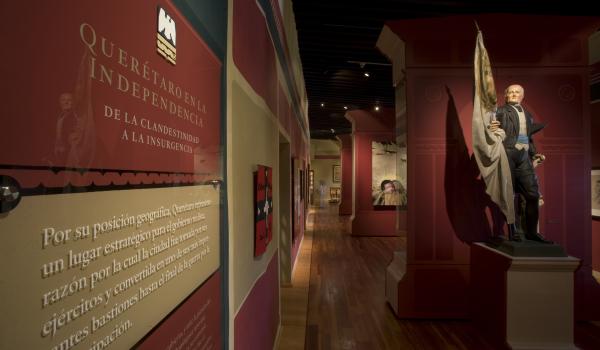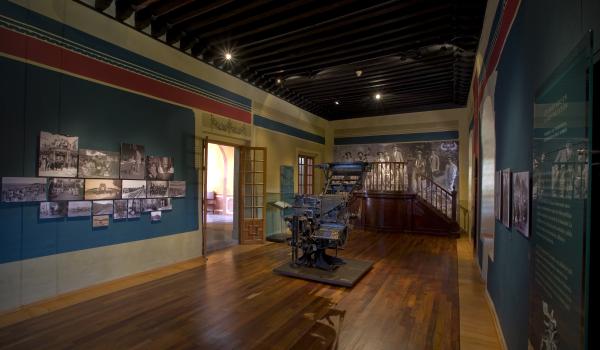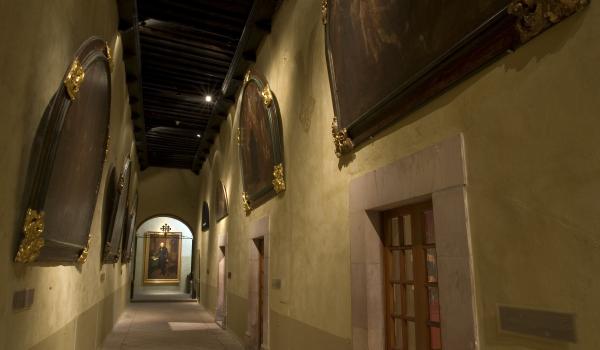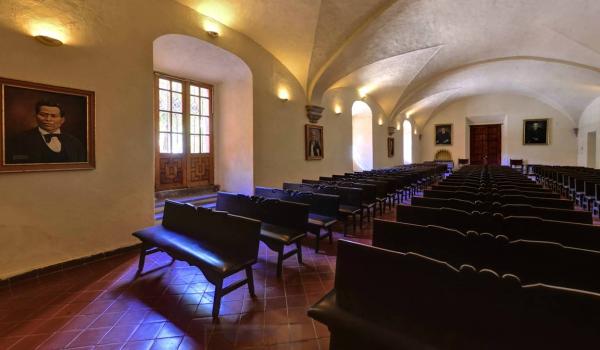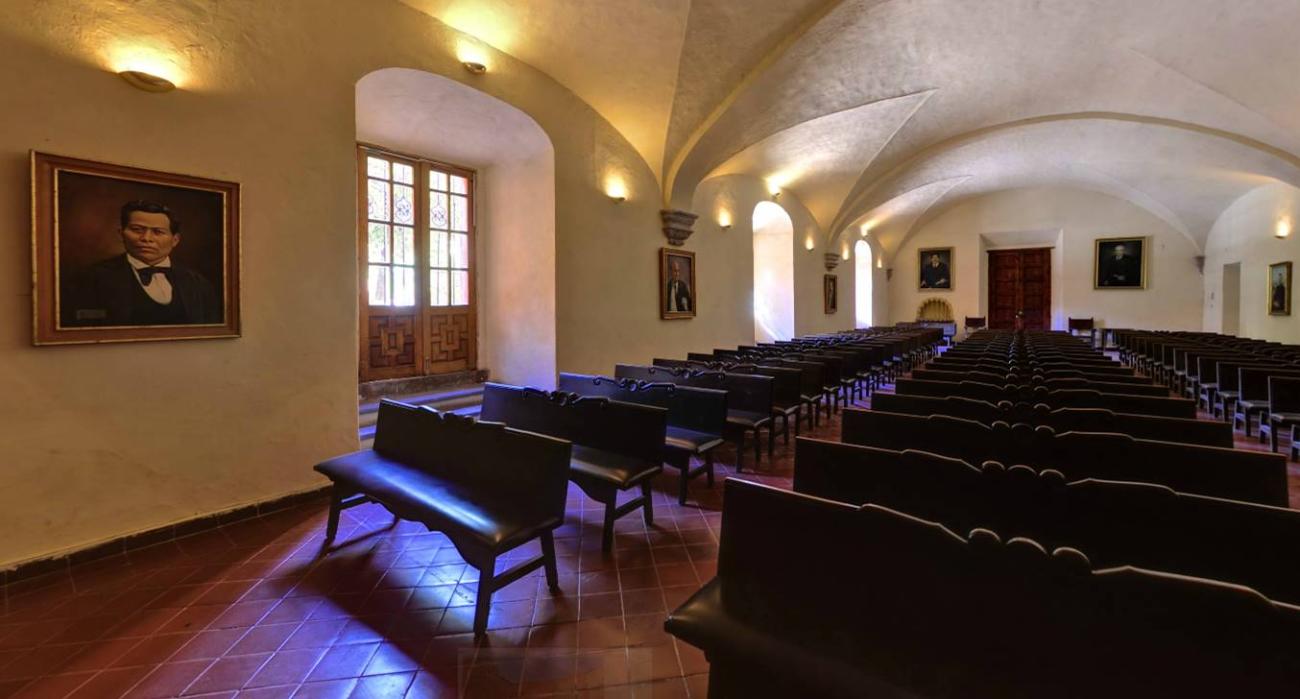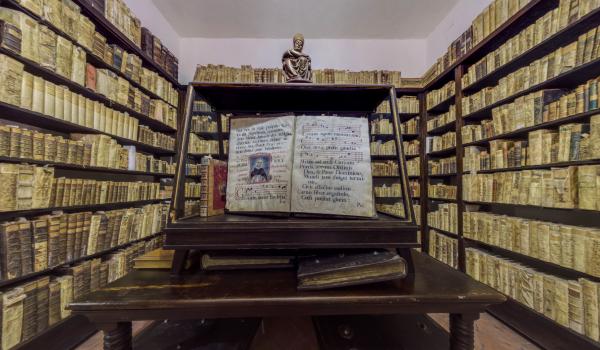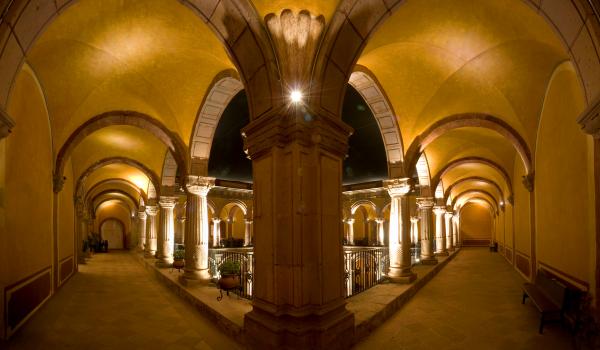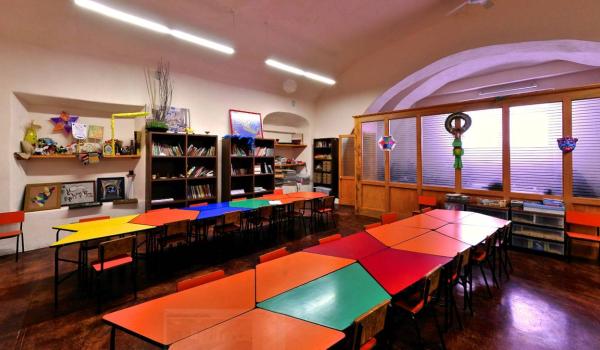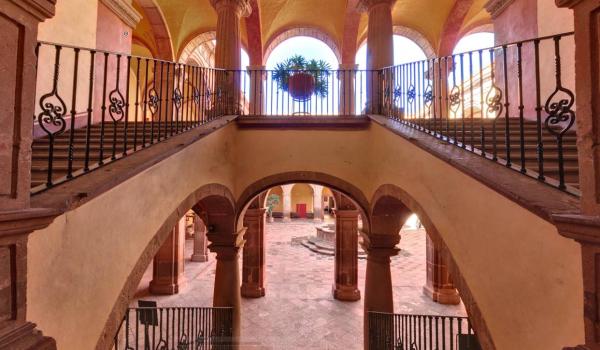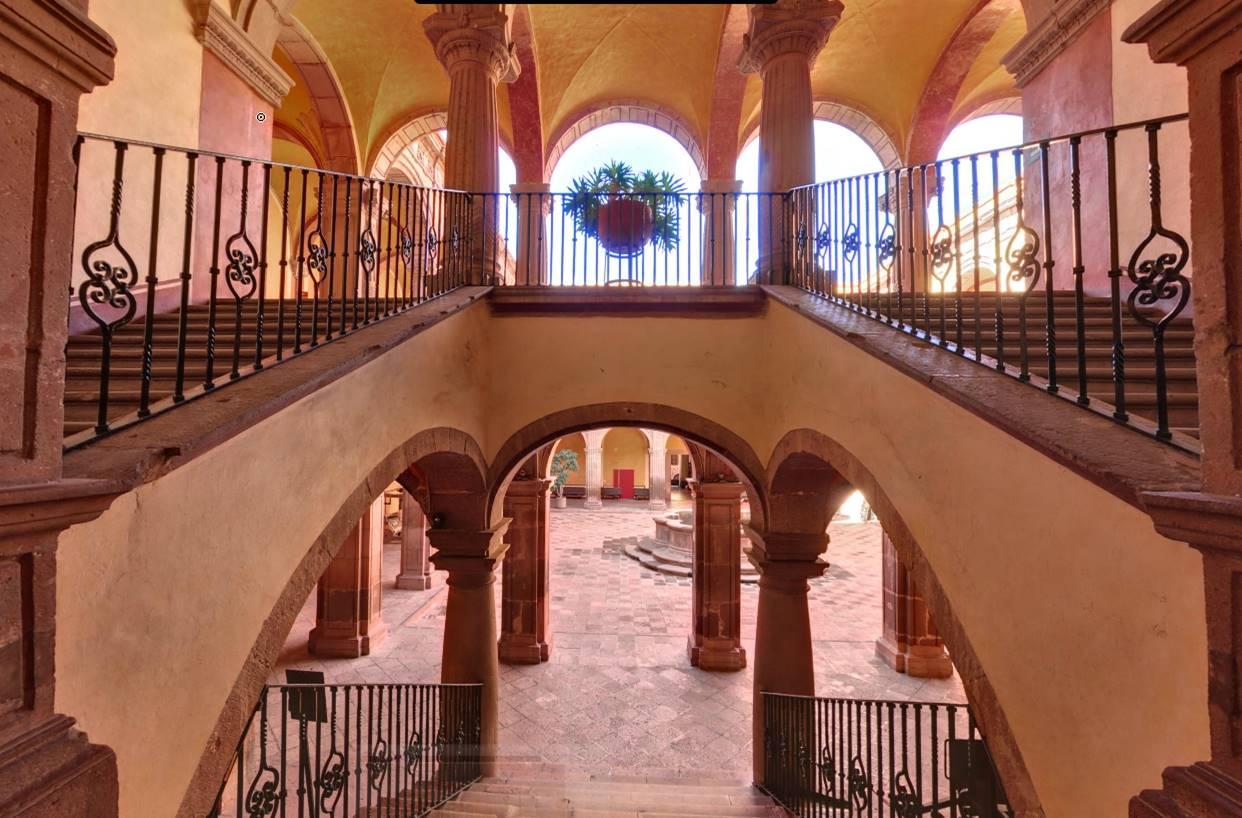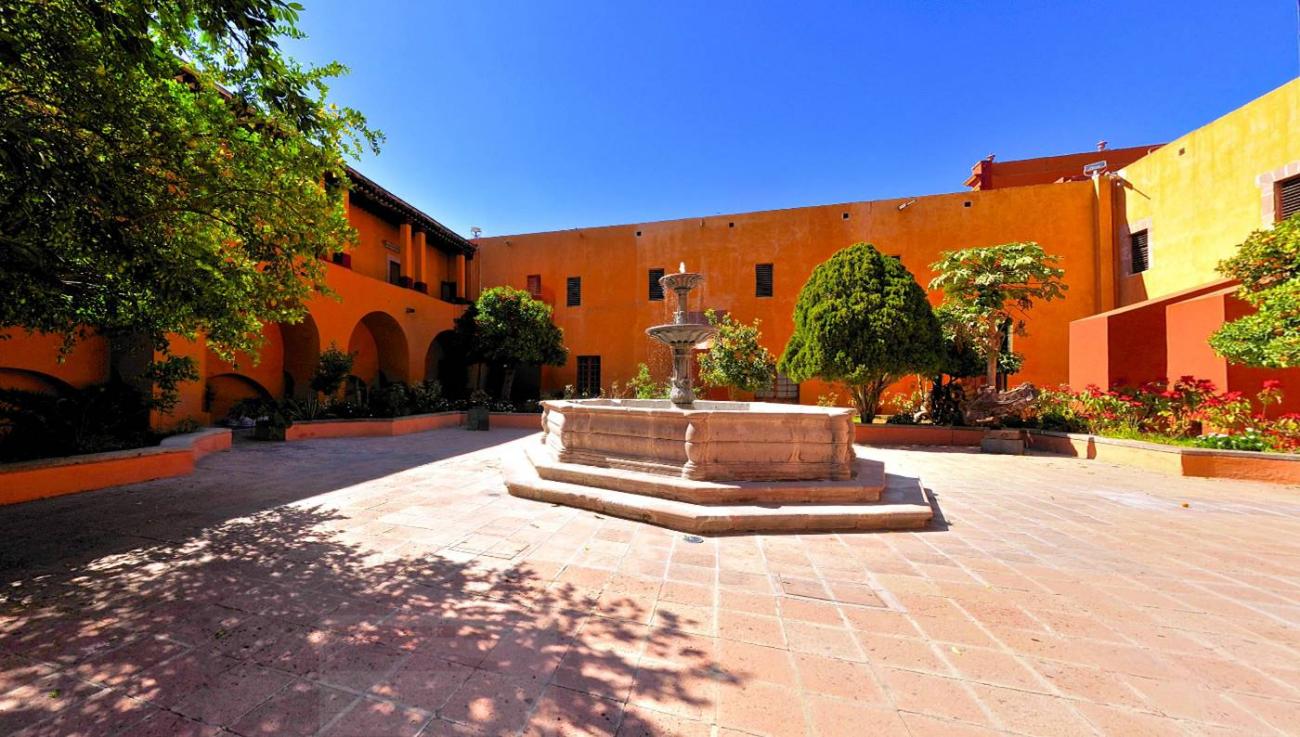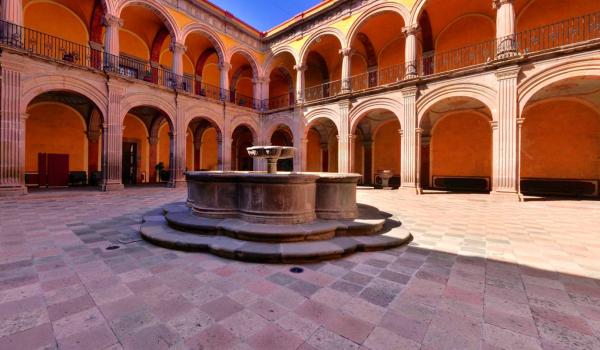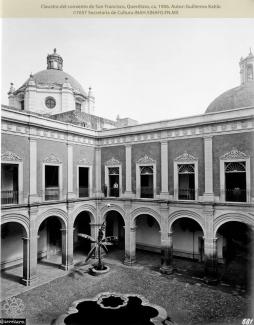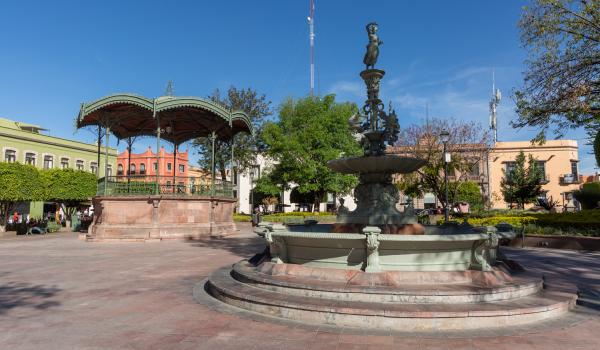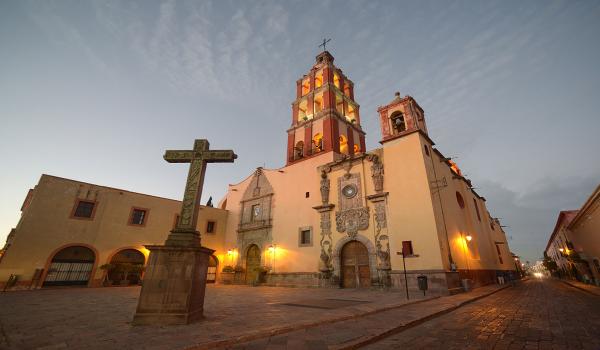Founded in 1936, it is the state’s oldest and most important museum. Its only forerunner, the National State Museum, operated from 1892 to 1934. The Regional Museum of Querétaro currently has 50,000 square feet of space open to the public, including the seven permanent galleries (17,850 sq. ft.), the three temporary exhibition spaces (5,600 sq. ft.) and an auditorium with a capacity for 250 people. Throughout the year, the museum offers a wide variety of activities to its visitors such as concerts, national and international touring exhibitions, talks, courses, workshops, theater plays and guided visits, among others.
The origin of the Regional Museum of Querétaro dates back to the first decade of the twentieth century, during the administration of the governor Francisco González de Cosío, when a collection of paintings was donated to the Academy of Fine Art from the Academy of San Carlos in 1910. This collection was made up of works by leading exponents of the painting of New Spain from the seventeenth and eighteenth centuries, such as Baltasar de Echave, Miguel Cabrera and Nicolás Rodríguez Juárez, to name but a few. Following two very complicated social and political processes—the Revolution and the Cristero rebellion—this collection, together with items from churches and monastery libraries, came to form the patrimony of the Regional Museum of Querétaro. It was established in the Former Monastery of Saint Francisco by Germán Patiño, a leading figure of the day and a fundamental actor in the first efforts to protect Querétaro’s heritage, to whom this initiative is owed. The Regional Museum became part of the INAH when this institution was established in 1939, falling under federal administration. Subsequently, in 1954, it was among the regional museums that underwent a process of reorganization by the Institute.
The building the museum currently occupies was originally the Franciscan Monastery of Santiago, which since its origins in the sixteenth century, served both as a center for the governance of social life in Querétaro and a focal point of the urban plan. It was in an enormous religious complex which, until the early eighteenth century, carried out a variety of functions linked to the daily life of the city’s inhabitants, as it was the first and only parish. Its influence reached beyond its own territory as it was headquarters to the Province of San Pedro and San Pablo of Michoacán for more than two centuries. For this reason, the social, economic and political structures which characterized the regional society during the colonial period grew up around it.
Throughout the seventeenth century, the monastery underwent intensive construction activity; more than a monastery, it became a religious complex. It reached a total built area of approximately 300,000 square feet, making it a self-sustaining miniature city. Furthermore, until 1803, it was also used to train novices and to teach reading and writing to poor children. After many historic changes and various uses, mainly as a barracks in armed conflicts during and after the Reform War, as well as some civil and commercial uses, on December 4, 1928, the building was handed over to the state government to establish a Museum of Colonial Religious Art and a School of Arts and Crafts. In 1935, it was placed under the responsibility of the Ministry for Public Education.
From the beginning of the twentieth century, a group of people from Querétaro led by Germán Patiño Días took over protection of the monument as part of a comprehensive plan for the recovery of the historical heritage of Querétaro. As a result, in November 1936, the Regional Museum of Querétaro was officially handed over to Mr. Patiño, its first director.
Since its establishment, the museum has been renovating spaces and expanding its functions. The last major renovations were made from 1995 to 2009, under the direction of curator Rosa Estela Reyes, and included aspects important to the museum’s work: reorganization of the exhibition design, documentation of the collection, cataloguing of the collection, image design of the museum and maintenance of the building. Interventions in the existing galleries and modification and creation of new museum spaces have allowed the museum and its superb collection to reach their full potential.








